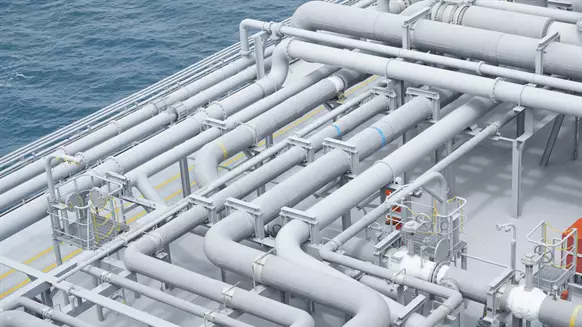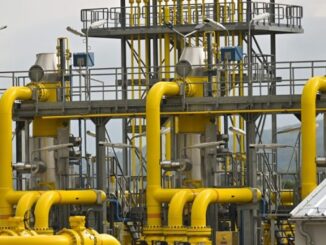
Countries across Europe are rushing to install new LNG import facilities as quickly as possible.
That’s what Matteo Illardo, Europe analyst for RANE risk intelligence, told Rigzone, adding that most of these projects include floating storage regasification units (FSRUs), which can be installed more quickly than permanent onshore terminals.
“Around 25 new FSRUs, according to estimates from S&P Global Platts, are now expected to be installed across the EU in the coming years, with the first facilities set to be operational already by the end of 2022 facilitated by a combination of political and commercial will in accelerating work,” Illardo said.
“Germany in particular, arguably the EU state most impacted by Russian natural gas disruptions, has accelerated LNG developments in recent months with new regulatory initiatives that include a new law designed to accelerate the approval process for new LNG import terminals and lower feed-in tariffs at LNG terminals,” Illardo added.
“As a result, the country has accelerated work for five new FSRUs as well as two permanent onshore LNG terminals. The first two state-backed FSRUs, in Wilhelmshaven and Brunsbuttel, will be available at the end of 2022, the other two, in at Stade and Lubmin, from May 2023. A fifth project will be carried out by Deutsche ReGas at Lubmin as early as December 2022 with an FSRU supplied by France’s TotalEnergies,” Illardo continued.
Netherlands, Greece, Italy, Ireland and More
Looking at other countries in the EU, Illardo outlined that the Netherlands is deploying two FSRUs that are expected to be operational in September this year and highlighted that five FSRUs are being planned in Greece, two in mainland Italy, two more off Sardinia, and two others in Ireland. Single FSRUs are also planned in Finland, Estonia, Poland, Cyprus, and France, Illardo revealed.
“Overall, already by 2023, the deployment of new FSRUs should ease bottlenecks and large dislocations between hubs in Europe,” Illardo said.
“Yet prices are expected to remain high nonetheless, as much will depend on Europe’s ability to secure LNG cargoes on the market at prices outcompeting consumers in Asia. So, serving Europe’s market will remain profitable,” he added.
“On the longer term, industry group Gas Infrastructure Europe (GIE) estimates LNG terminals in the EU could provide a gateway for more than 285 billion cubic meters of imports by 2030, enough to meet estimated import demand at that time, compared to Europe’s current import capacity of around 220 Bcm per year,” Illardo continued.
The RANE analyst also noted that new pipeline projects connecting LNG terminals to inland Europe are expected to boost LNG demand on the continent.
“Spain, for instance, has six functioning LNG terminals, but has limited pipeline capacity to pump it north to the continent’s major consumers,” Illardo said.
“A potential new gas connection between Spain and France is now being discussed and could be ready to operate in just 8/9 months, if France and other European countries agreed to fund the project, according to estimates from the Spanish governments,” he added.
“Alternatively, should a link via France not be realized, a sea-based pipeline from Spain to Italy is also being considered. The pipeline could then transport LNG arriving at Spain’s and Portugal’s terminals to inland Europe, thus boosting demand,” Illardo continued.
Illardo also stated that new investment in import facilities and other midstream infrastructure to distribute the LNG across the continent would also “contribute to crystalize a more permanent commitment to LNG despite climate pledges”.
Europe Relying Heavily on USA LNG
Illardo noted that Europe has been relying heavily on U.S. LNG to replace Russian pipeline gas imports, adding that the European Commission’s plans to diversify away from Russia’s energy sources include eliminating all Russian gas imports by 2030.
“To do so, the Commission sees increasing LNG imports as a key strategy, saying it will work with EU member states to guarantee longer-term demand for U.S. LNG of some 50 Bcm per year, more than twice as much the bloc bought from the U.S. in 2021, until at least 2030,” Illardo said.
“Still, while U.S. LNG sees favourable prospects for further expansion to help fill the gap in the EU’s energy mix, although long-term prospects for U.S. LNG exports to Europe may still be capped by EU climate goals and competition from other LNG exporters, Europe’s LNG import capacity in key countries is the main obstacle to expand supplies in the short term,” he added.
“In recent months, northwest Europe’s import capacity utilisation has reached over 100 percent, which has been creating bottlenecks and driving large intra-regional hub price dislocations,” Illardo continued.



